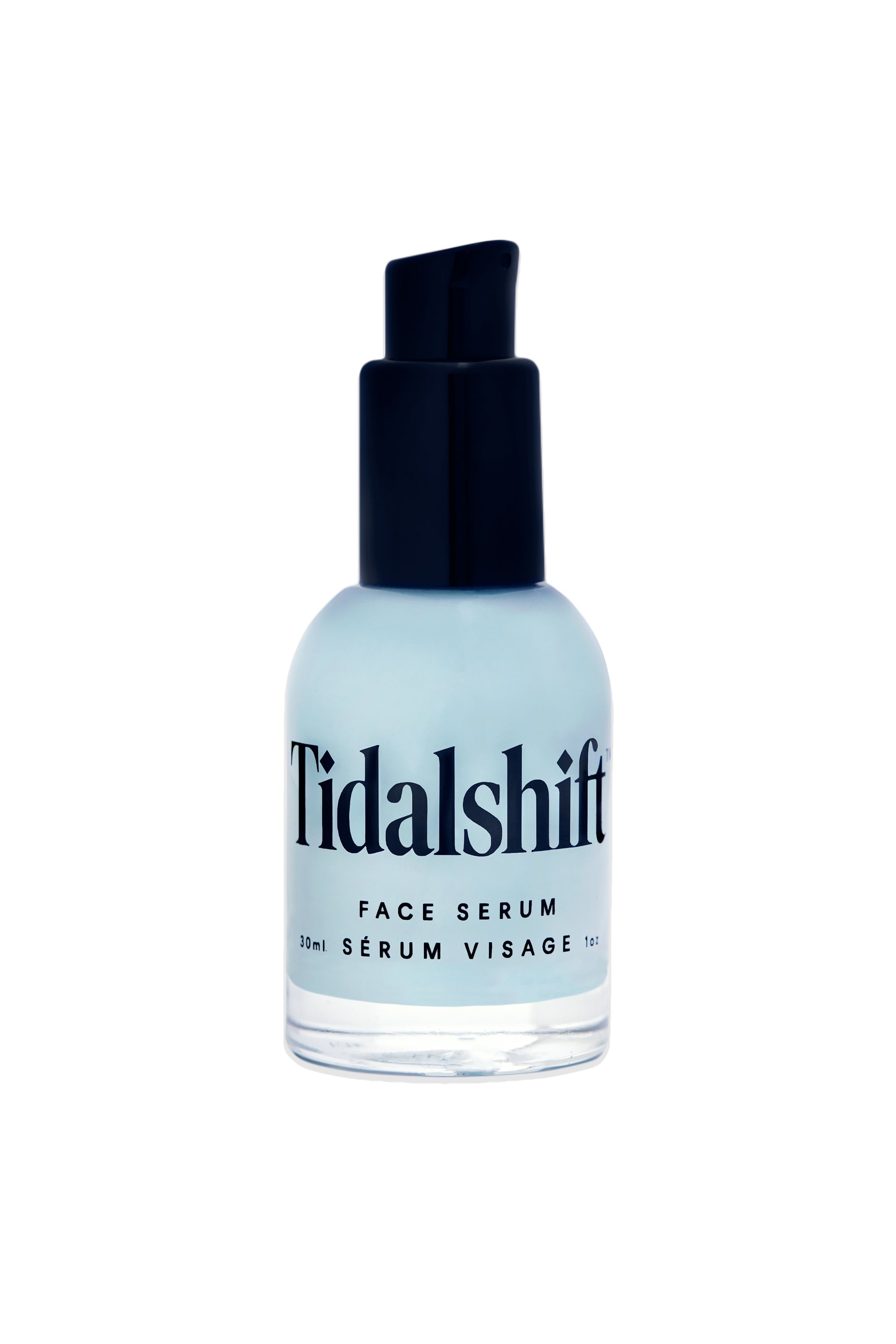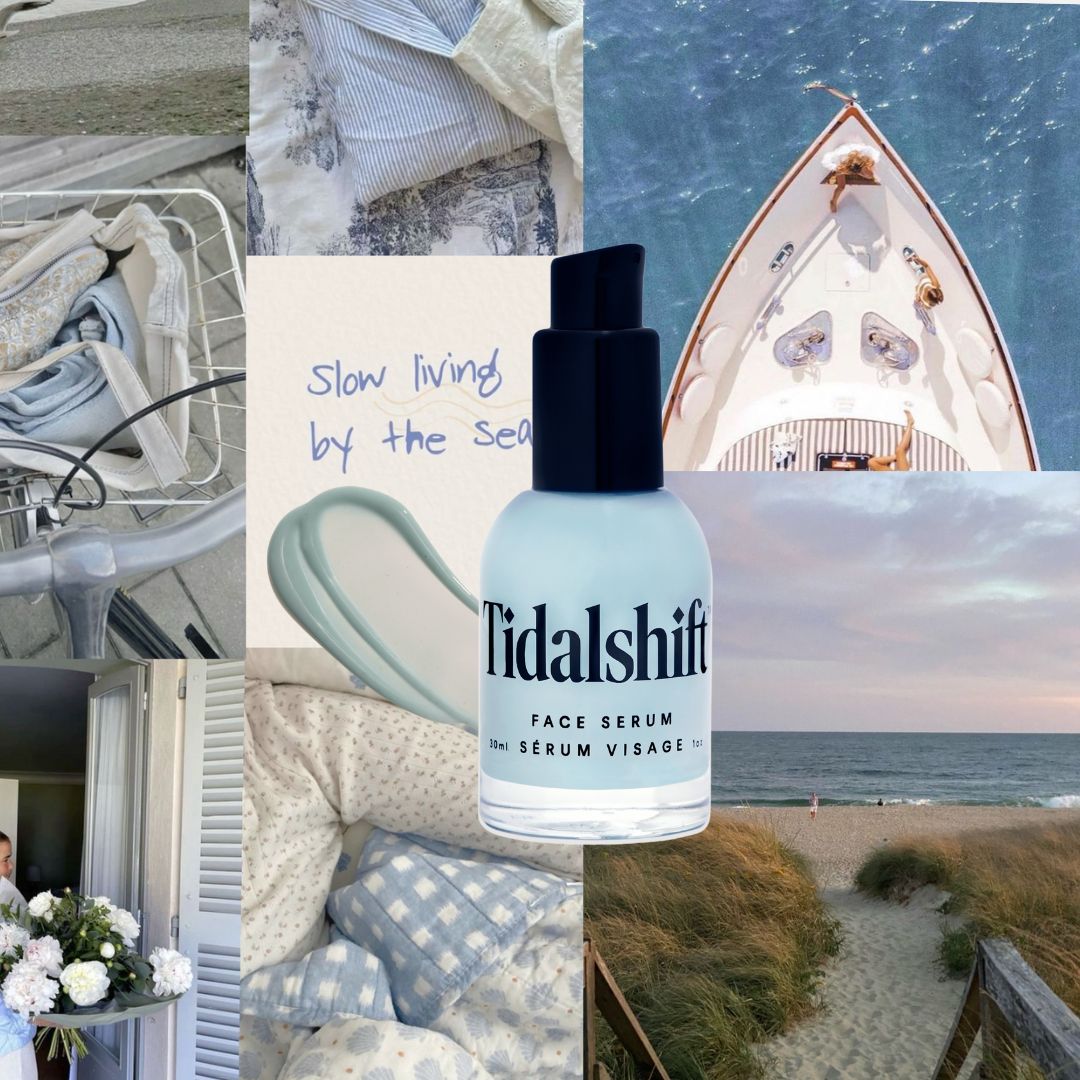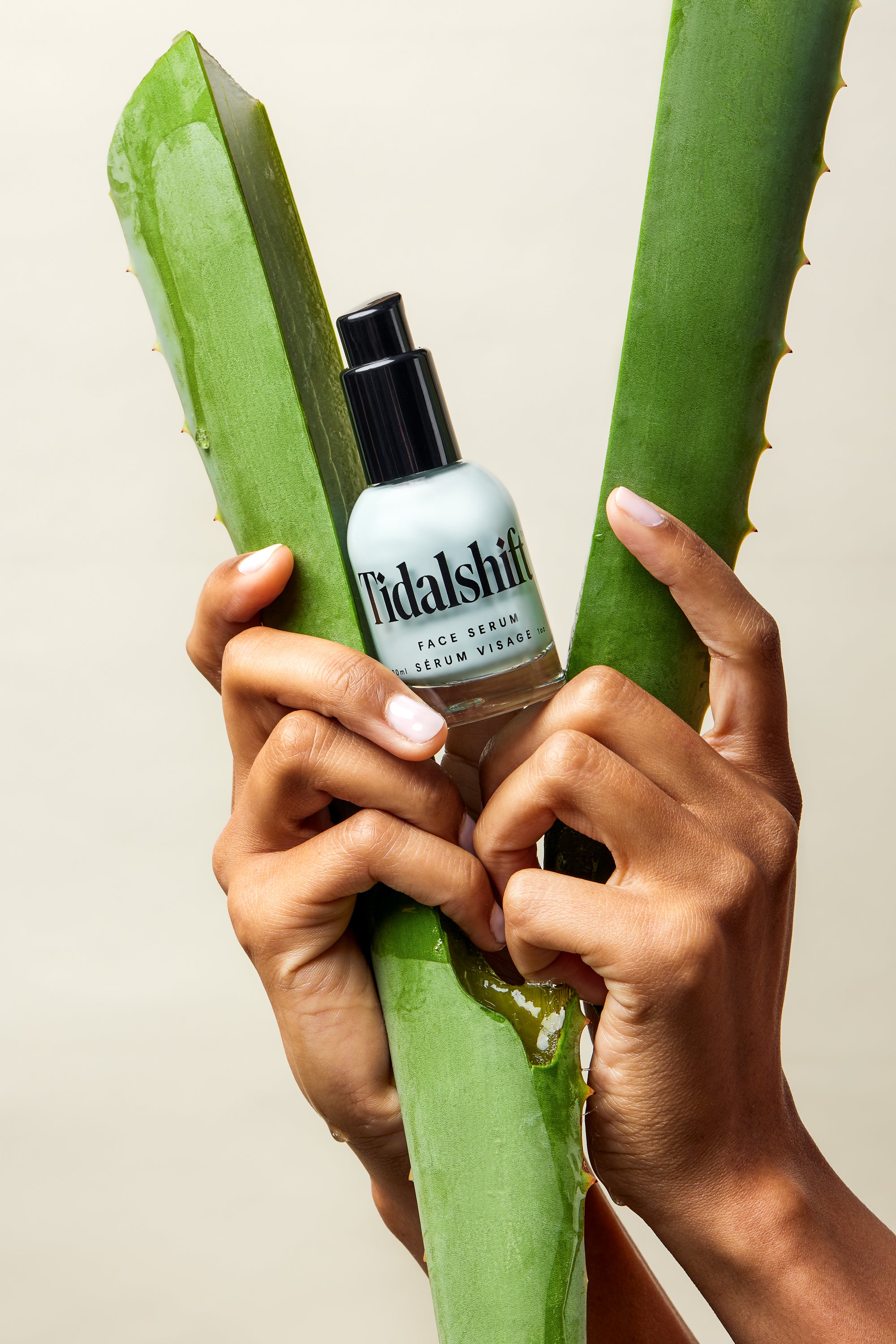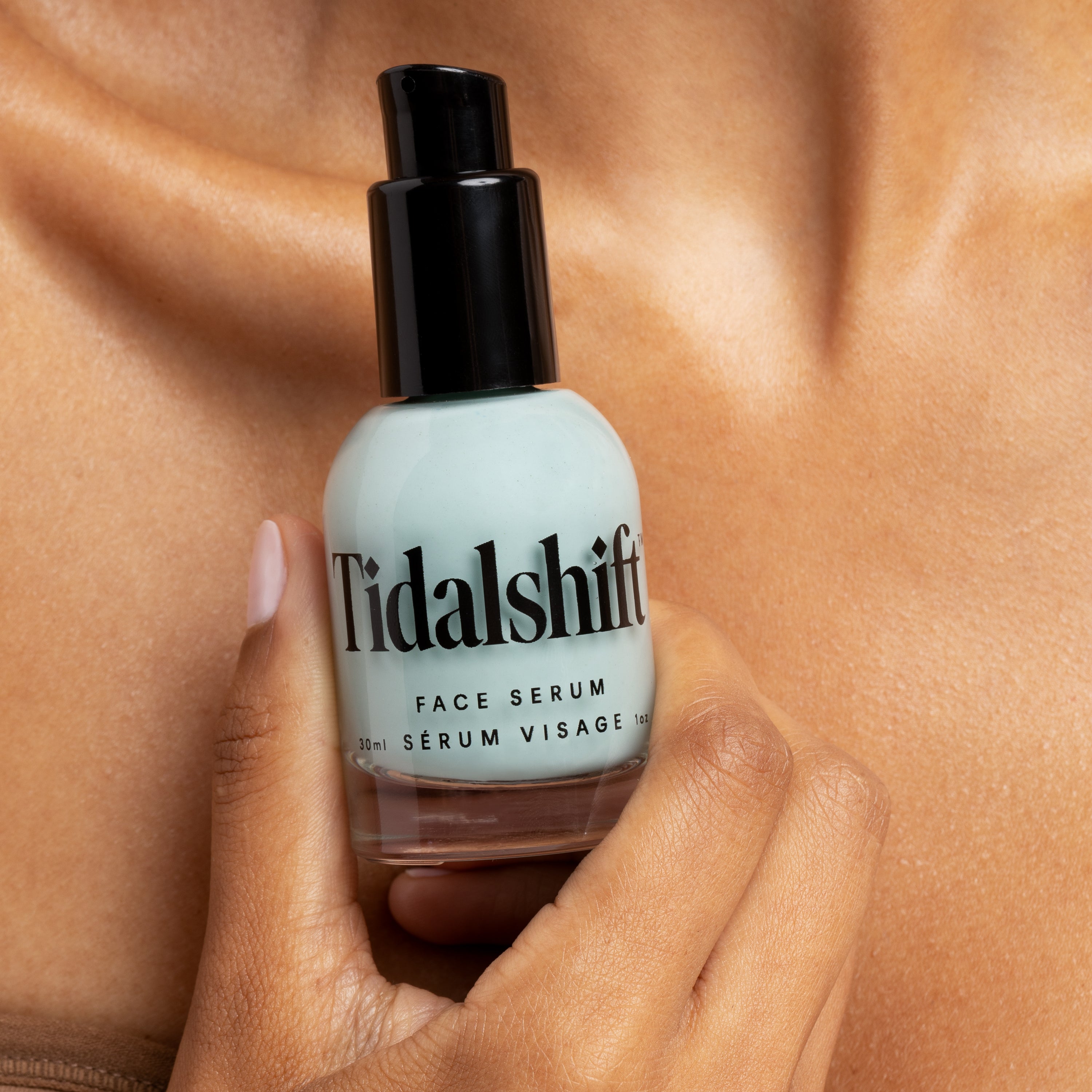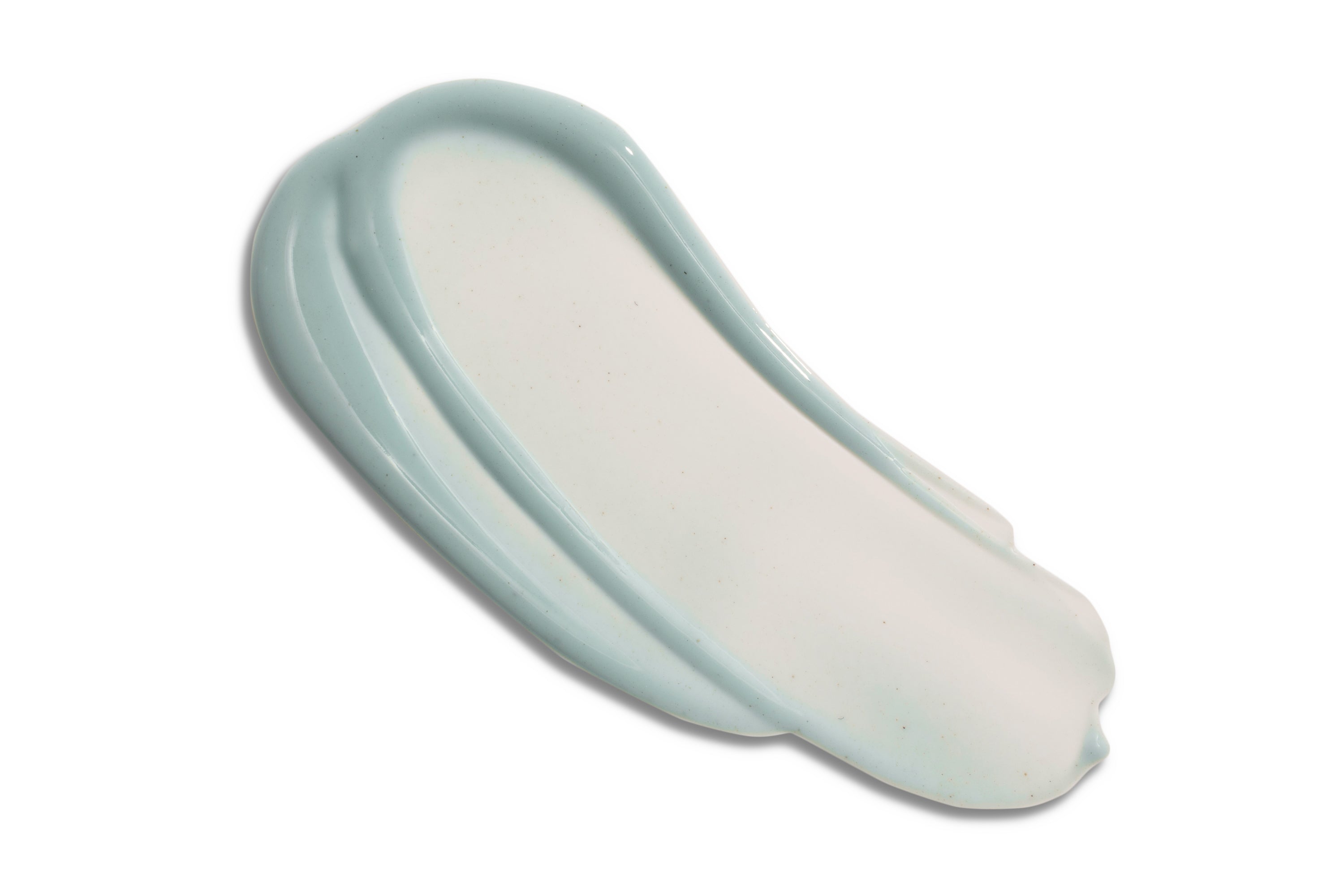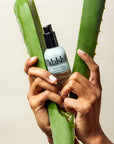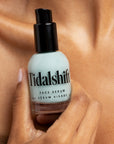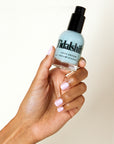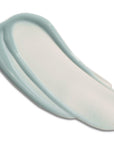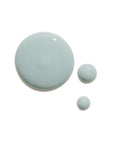A lightweight moisturizing emulsion, TidalShift is a strengthening serum that delivers deep hydration while helping to increase the skin's resilience to environmental stressors. This ocean-blue silk glides across the skin like a gentle wave with fortifying blue-green microalgae, niacinamide, ceramides, and polypeptides to help reduce the appearance of redness, fine lines, and hyperpigmentation.


